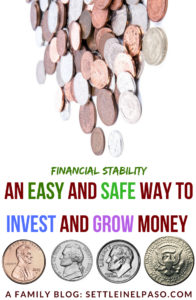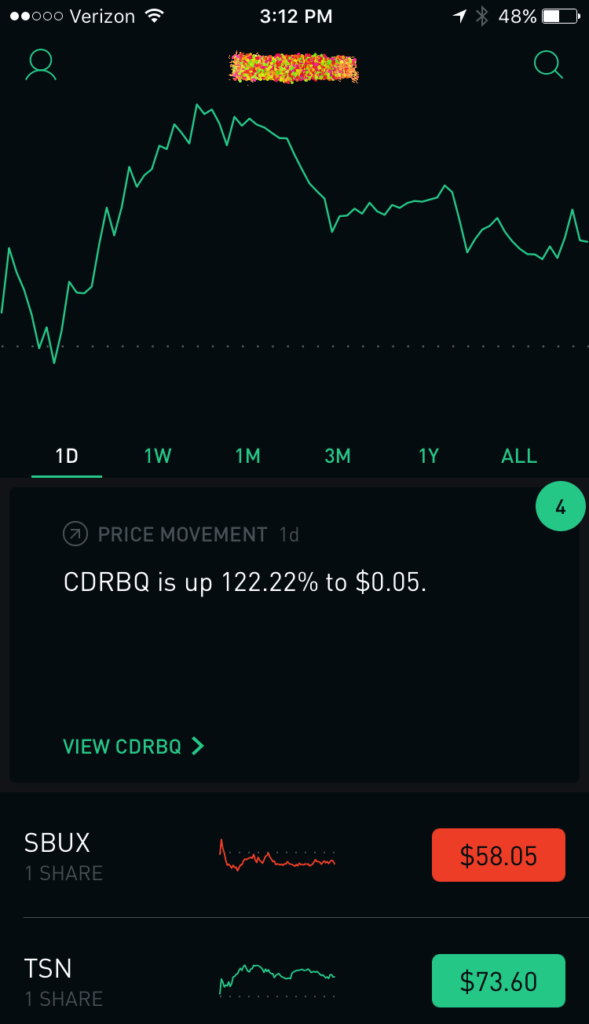
Life started to demand more planning once our little one was born. We cannot just start an adventure trip to Grand Canyon on short notice; we cannot go to late night movies without managing a sitter; of course we cannot travel light anymore. The little one needs a lot of attention. Additionally, the little one brings more thoughts in mind, one of which is the financial stability. A few crucial financial items we think about being parents are:
- College fund: What if our little one becomes an ivy league material but we cannot support him because we did not plan accordingly? 🙁 It does not have to be ivy league, many state universities are pretty expensive.
- Retirement: Many times, it is a part of the employment benefit. Other times, people need to make sure that they separate money from every paycheck and create a scheme that has benefits in the long run. Many financial institutions offer different types of retirement accounts.
- Home mortgage: Most people pay a significant amount of their monthly income on home mortgage. Getting the lowest mortgage rate in the first place is crucial. Pay back as much and as early as you can so that the extra money you are supposed to pay as interest can go to the retirement fund.
These are some of the major items of Family Financial Planning. We will discuss more on retirement plan, home mortgage, and college funds later in other post. For now, we will simply talk about a money saving strategy using stocks. Almost all grownups have a bank account. Most of the times bank accounts are checking account. Sometimes people use certificate of deposit (CD) as a saving. All these are good but checking, saving, or traditional CDs have quite conservative interest rate. A high quality CD may have an interest rate of 1.2%. Checking and savings account interest rates are way lower than that. In any normal year, the inflation rate is higher than the interest rate provided by a high quality CD. The meaning is —
our buying power with the CD is not increasing because of inflation even if we get a 1.2% interest out of from it.
We did some research and came up with a scheme that is suitable and safe for us. We feel that the best way to make sure that the money we have in our checking/savings account is growing at a higher rate than the inflation is investment. We never recommend investment of full cash amount one has in a checking account, rather investment should be a percentage of the available cash. Instead of investing the whole intended amount at a time, the money should be released to investments slowly, over small chunks, over a few months.
Stock: A stock is an unit of ownership of a company. Another alternative term is share. Stocks do not have annual fees but they have transaction fees. That is, an investor generally has to pay a fee of $5 to $10 to buy or sell stocks. The fee applies to each transaction.
Mutual Fund: A mutual fund is generally composed of stocks of multiple companies. Every mutual fund has a fund manager (to the best of my knowledge). The fund manager makes sure the objective and goals of the mutual fund is maintained. Since there is a fund manager, there is an annual fee. Some mutual funds have minimum investment limits. For example, consider that a fund manager maintains a mutual fund called, BIOE, composed of stocks of biomedical engineering companies. BIOE may have a restriction that the minimum investment on BIOE can be $3000. Other possible restrictions I remember are, time and balance restrictions. Time restriction is something like this: there will be a penalty of 1% if the investor pulls out any part of the investment before completion of three months. Balance restriction is something like, the balance cannot be any lower than $1500, or so. If it comes below $1500, the annual fee will increase by 0.5%. Please make sure to study the prospectus of every mutual find you invest to. Based on our research, mutual funds offer a good tool for long-term investment.
How can someone invest periodically?
 The answer is, through a brokerage account. Although the term broker sounds as if there is a person who will buy and sell stocks, the common practice in this digital era is online brokerage. One can invest without even talking to any human broker. There are many reputed financial institutions where one can open a brokerage account, for example, Fidelity Investments, Voya Financial, Lincoln Financial Group, Vanguard Group, Prudential, and many other companies. Once you create your brokerage account you can start investing. The problem with any of these companies is that you either have to pay a yearly commission against your investment (in case of mutual funds), or any transaction you make will be charged a fee (in case of stocks). For example, if someone decides to buy a stock of Intel Corporation in a fine morning, she/he can do just some clicks and, wah-lah, it is purchased. That is true but there is a fee of $5 to $10 dollars depending on where the brokerage account is opened. Are we willing to pay $10 to buy a $36.86 dollar Intel Corporation stock?
The answer is, through a brokerage account. Although the term broker sounds as if there is a person who will buy and sell stocks, the common practice in this digital era is online brokerage. One can invest without even talking to any human broker. There are many reputed financial institutions where one can open a brokerage account, for example, Fidelity Investments, Voya Financial, Lincoln Financial Group, Vanguard Group, Prudential, and many other companies. Once you create your brokerage account you can start investing. The problem with any of these companies is that you either have to pay a yearly commission against your investment (in case of mutual funds), or any transaction you make will be charged a fee (in case of stocks). For example, if someone decides to buy a stock of Intel Corporation in a fine morning, she/he can do just some clicks and, wah-lah, it is purchased. That is true but there is a fee of $5 to $10 dollars depending on where the brokerage account is opened. Are we willing to pay $10 to buy a $36.86 dollar Intel Corporation stock?
The transaction fee does not change based on how many stocks someone purchases rather. It is a fixed fee and is imposed on every transaction: buy or sell. That means, one should not spend the $10 transaction fee to purchase just one $36.86 dollar stock. It seems okay to purchase one hundred such shares worth $3686.00 with a transaction fee of $10. Same goes for selling. Therefore, small and frequent transactions will increase the cost of purchase a lot. We should not buy or sell in every fine morning! 🙂 Growth of the value of a stock in the long run may fail to overcome the cost of transaction if only a few stocks are purchased everyday, let alone the inflation rate. For regular investments (say, each month) with most of the big financial institutions, we find that mutual fund is more appropriate and less costly. Mutual funds generally have annual fees as mentioned before, and the fee may vary from less than 1% of investment to 3%. One has to make sure the historic data shows that the growth is significantly higher than the transaction fee in the long run.
Based on the discussion above, it seems mutual funds are good for regular and periodic investments because they do not have transaction fees. For stock investments, we need to make sure that the fee we are paying for any transaction is worth for the amount of the transaction.
What if there is no transaction fee for buying or selling stocks?
Life would be so easy! 🙂 The fine morning scenario will become true. In one fine morning I may decide to purchase a $36.86 dollar Intel Corporation stock, another day I may decide to buy one $24.28 dollar stock of Boston Scientific Corp, and the next day I may decide to sell it because I am not feeling that scientific anymore. Yes, this is what is called dream come true! However, as delightful as it sounds, it is not that easy to maintain a fund. One has to study which stocks are stable, what stocks have good profits, and which stocks are less vulnerable to a market crash. With mutual funds, the fund manager will do a lot of the research for all the investors and make modifications to keep the mutual fund strong. We are on our own for stocks. A stock is basically an ownership of the company (might be an incorrect statement but enough for a layman like me). Company’s performance, public sentiment, local and global economy – anything can impact the price of the stock. Therefore, keeping an eye open while investing in stocks is important.
Anyway, I hope I have given enough warning about the responsible usage of the super power of being able to make transaction without a fee! After doing some research, we found that Robinhood is an online trading company that allows fee-less stock transactions. Robinhood is just a slick mobile app at the client side. They brought all the brokerage concepts required for the client in one simple mobile application. Investors can only do stock transactions. There is no mutual fund in Robinhood. To the best of my understanding, there is no mutual fund in Robinhood because mutual funds require highly qualified managers and Robinhood minimizes its operational cost by doing most of the work automatically in the server side. The company relies on a thin line of uninvested money of the clients for operational cost and profit. After an investor transfers money to a brokerage account, the investor usually does not invest the whole amount. For safekeeping, many people reserve 3% to 20% of their intended money uninvested. Some people keep an amount uninvested to be able to invest when the prices of some stocks go down. Robinhood receives interest from the uninvested money of millions of their clients. Pretty smart! Isn’t it? As clients, our benefit is that we can flexibly make transactions without even paying a dime as transaction fees.
Features of Robinhood that make it unique
There are many nice free features of the Robinhood mobile app. Other companies charge for these features. For example, of course, investors can sell and buy at market value without any fee. You can even setup limit buy, stop loss sell, etc. to flexibly operate your transactions. That is, one can set up a transaction in such a way that a stock will be sold automatically if the price falls below a certain threshold. Or, we can set up the maximum price we are willing to pay to buy a specific stock. The stock will be purchased only when the price is less than or equal to the maximum price we have set. Investors can set these features up for indefinite time without any fee. Other companies charge the investor for such unlimited time setups.
In addition to all the features mentioned above, an investor can setup periodic automatic transfer from a bank to Robinhood account. This is an excellent feature if we would like to use Robinhood as our saving tool.
After selling some stocks in Robinhood, I observed that a few cents, like 1 to 2 cents, are off in the balance. I found that this is not a fee for Robinhood. It is charged by the US Securities & Exchange Commission and FINRA on sell orders only. The amount is so small that I ignore it.

We learnt the features through practice
We practiced Roinhood by investing $100 for a month. We bought and sold very cheap shares and studied all the features. After doing enough practice for a month, we found that our money was a little less than $100. It was time to do real investment. We slowly moved money to Robinhood. At this moment, we have some stocks of Starbucks (SBUX), Tyson foods (TSN), Hormel foods (HRL), Total System Services (TSS), Intel Corporation (INTC), Retail Opportunity Investments (ROIC), and Boston Scientific (BSX). I have provided the codes used for these companies in stock exchange in parentheses. If you just copy and paste the code in a Google search engine and hit enter, you will be able to see the price history in a graph. Please do your own analysis and come up with your set of companies based on your goal and objective. We just provided the names of the companies we currently have as samples. It does not necessarily mean that they are the best. It rather means that our logical deduction and objective drove us toward these stocks. People have different preferences and different objectives.
Any amount of money doubles in a little more than seven years with a 10% annual growth or profit. With a 10% steady growth, $100 will become $110 after one year. It will become $121 after the second year, $133.1 after the third year, $146.41 after the fourth year, 161.051 after the fifth year, $177.1561 after the sixth year, $194.87 after the seventh year, and $214.36 after eight years. It takes way longer with CDs. Please choose your companies wisely, and make sure to diversify the investment. Please do not expect that the invested money will grow everyday. Some days are better and some days are worse than the other. The goal has to be long term.
Diversifying investment
We do not invest on one company. We create a portfolio of our own, as we already mentioned (SBUX, TSN, HRL, TSS, INTC, ROIC, and BSX), and then invest almost equally on all of them. We set up stop loss sell based on how much loss we are willing to tolerate in this quest. Our observation is that the portfolio may experience a little bit loss in the first few months but they get on their feet after some time. With long term planning and Robinhood’s fee-less setup it has become a possibility to invest in small amount time to time. We also revisit our portfolio every few months to verify if the companies are all doing good. Robinhood provides news related to every company, which makes it a bit easier to do some analysis.
Robinhood Instant
When you sell a stock the money does not become available immediately for other transactions. The money generally becomes available three trade days after the transaction. This is the time required to do a stock exchange settlement. Robinhood Instant provides the power to use the sold amounts immediately. It is a free feature. After using Robinhood for some time (diligently), they offered us Robinhood Instant. We accepted the service but we never needed to use it, so far.
Some closing remarks
We are using Robinhood for stock investment and another financial institution for mutual fund investment. We came up with a set of rules for us. We would like to keep a few months of our salary, preferably six months, in our checking account. We make sure that around 12% to 15% of our salary goes to a retirement account. Some companies contribute 6% to 7% match to employee’s retirement account. People in government jobs generally have systematic retirement accounts. Even if someone has retirement plans, it is necessary to do some investments for emergencies, easing out mortgage payments, and supplementing college funds of kids. The basic idea is, whether a job supports a retirement account or not, everyone needs a plan for the future. The plan must be safe and investments must be under one’s comfort zone.
We will get back to you with more finance related topics in the future. Meantime, please let us know if you have any question. Please do not hesitate to discuss anything relevant using the comment sections below.
Note: We have already published our next post on financial planning. The link is here: NEXT RELATED POST.
Other relevant posts
Subscribe to receive notifications on our new posts.








I am yet to invest in stock even though I know the benefits of stock investment. Stock investment is long term investment. You should invest in stock only when you can hold your investment for a long time.
My major investment is insurance. Well, insurance is not an investment rather it is a way of saving. I have a few insurance plants. These plane have a maturity period of 20 years. I will continue to pay premiums for 20 years. By the time I am ready to retire, I will already have money on my hands.
Nice, interesting and useful tips about investments and savings. I have heard a saying “money saved is money earned”. Investing money in mutual funds, stocks and bonds is very helpful for the uncertain future. Investing money in proper places at the right time is important. This detailed topic will help me to invest for the future. Currently I am investing in stocks and mutual funds. I am also thinking to invest in Crypto currency but the risk is high.
Investing is good for it helps one to be ready for what the future holds. I enjoyed reading your tips on investing for it will help to guide my future investment decisions. I prefer investing in estates to buying stocks.
Thank you for visiting and your note. Have a wonderful weekend.
Your tips about investing are very good, but lately, peope are afraid to invest their money. I would not invest in a new business, I prefer to invest in my retiring funds. A friend of mine made a coffee shop with cookies, she invested 150 000 euros and after one year she didn’t recover the investment and she risks the bankruptcy, her life in the last year was a surviving fight!
I am sorry to hear about your friend. That is unfortunate.
I do not prefer investing on one company. Diversifying over time instead of investing a lot on one, is what is generally suggested.
Thank you for visiting and commenting.
Thanks for reading my blog. Although I write about “boring economics” and financial topics, I’m glad that others also do the same! I find it fascinating and complicated but it sure can be boring too! Your theme of family and investing leaves many avenues for blog items and topics. Even though I chose to “kick start” my blog on the theme of the housing crash and crisis in 2008 and 2009, I also discovered that I seem to move forward and back in time and along the “financial” theme. Good luck with your blog, I just celebrated my 1st anniversary, it came fast.
Dear Barbara,
Congratulations on the first anniversary! We have read a few articles from your blog. We like your smooth delivery of content that feels like hearing a story.
We started our blog only a few months ago. Our theme is family. As you already noticed, a lot of subtopics under the family theme are there. We are using this blog mostly as a tool to document our journey through various alleys, with the hope that the information we provide will be beneficial for people seeking for them. 🙂
We do highly appreciate that you have visited our blog and left a note. We are following your blog so that we do not miss your posts and we get to know you better.
Settlers, Settle in El Paso 🙂